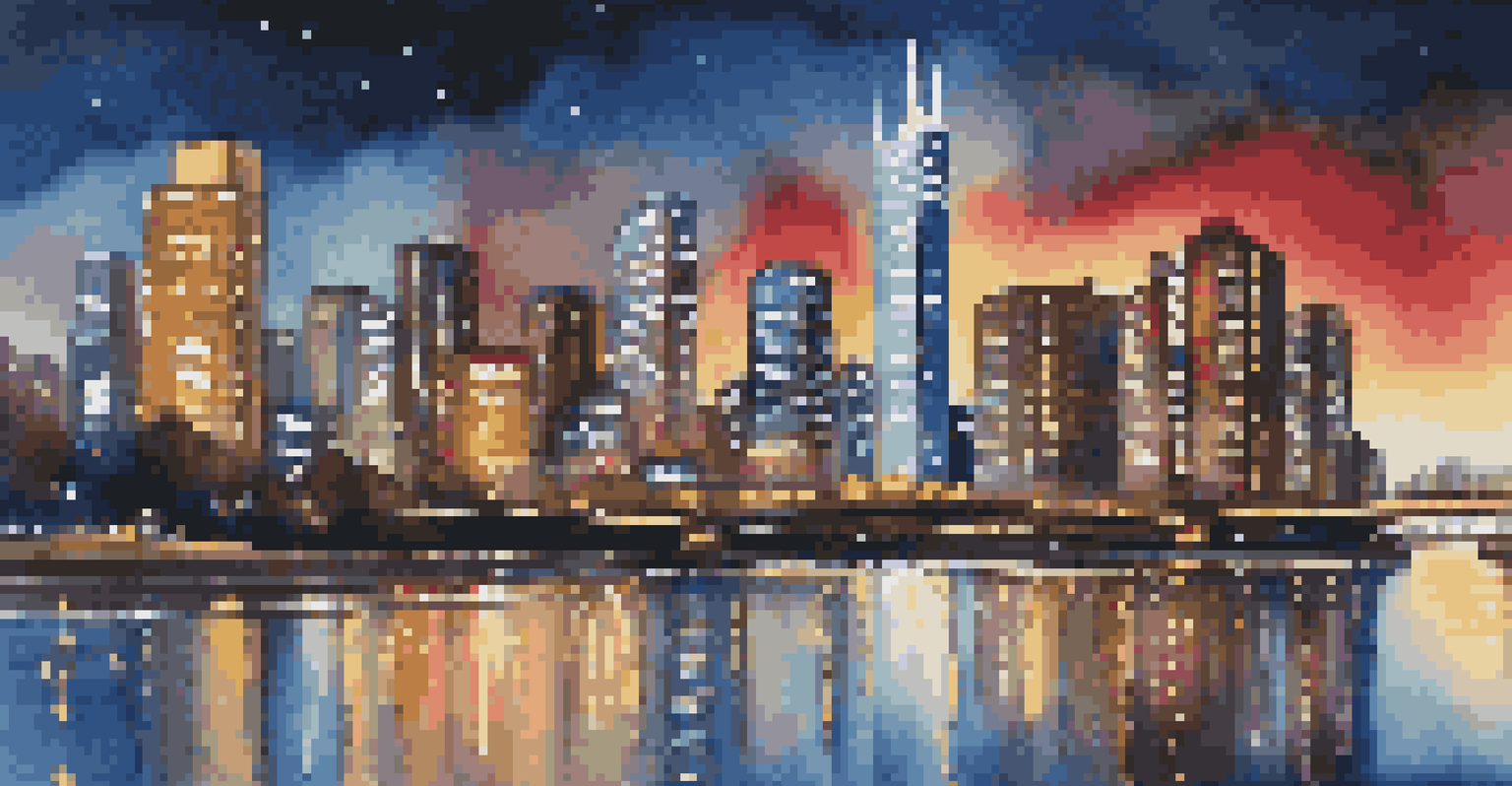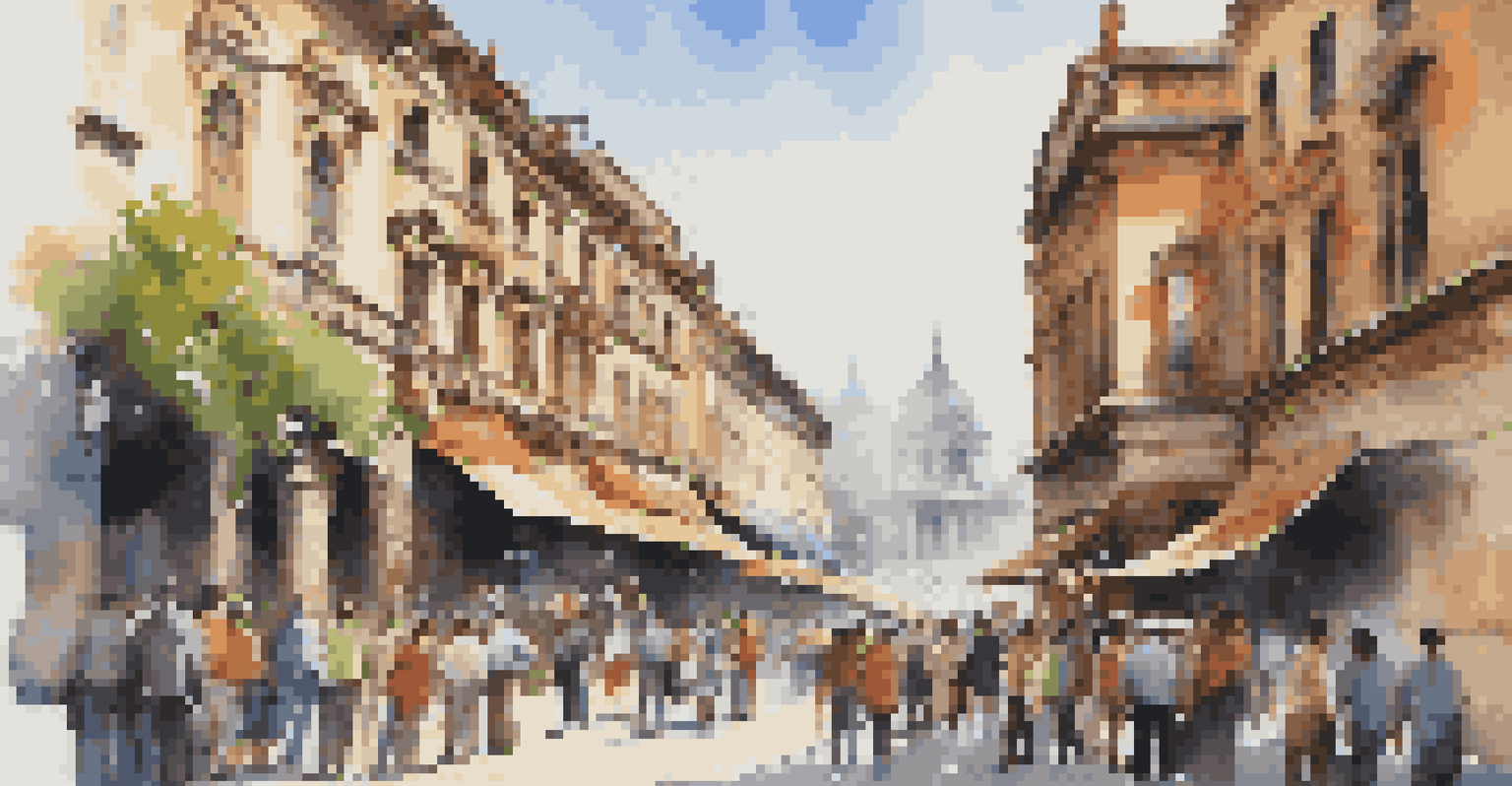Capturing Architectural Wonders in Travel Photography

The Allure of Architectural Photography in Travel
Architectural photography offers a unique lens to explore the world. Each structure tells a story, revealing the culture and history of its location. Capturing these designs not only preserves memories but also showcases the art of engineering and creativity. Whether it’s the intricate details of a cathedral or the sleek lines of a modern skyscraper, there’s beauty to be found everywhere.
Architecture is the learned game, correct and magnificent, of forms assembled in the light.
Traveling to new places gives you the opportunity to see diverse architectural styles. From the ancient ruins of Greece to the futuristic skyline of Dubai, each destination has something special to offer. By focusing on these structures, you can transform your travel photos into powerful narratives that resonate with viewers. People are naturally drawn to the stories behind these magnificent buildings.
Moreover, architectural photography can inspire others to explore these locations. Sharing your images can ignite passion in fellow travelers or photographers, encouraging them to visit and experience the beauty firsthand. Capturing these moments not only enriches your own journey but also connects you with a global audience.
Essential Equipment for Capturing Architecture
Having the right equipment is crucial for any photographer, especially when capturing architecture. A DSLR or mirrorless camera can provide the flexibility and image quality needed to highlight intricate details. Pairing your camera with a wide-angle lens allows you to capture the grandeur of larger structures without distortion while ensuring the entire scene fits in the frame.

Tripods are also vital for architectural photography, providing stability, especially in low-light conditions. They allow you to experiment with longer exposure times, which can create stunning effects, such as smoothing out flowing water or capturing the glow of city lights. Additionally, filters can enhance your photos; for example, a polarizing filter can reduce glare and improve color saturation.
Architectural Photography Tells Stories
Each building captures a narrative that reflects its cultural and historical significance.
Lastly, don't underestimate the power of a smartphone camera. With advancements in technology, many smartphones can take high-quality images that are perfect for social media sharing. While it’s great to have professional gear, being adaptable and using whatever you have can yield impressive results.
Understanding Composition in Architectural Photography
Composition is the backbone of a captivating photograph, especially in architectural photography. The rule of thirds is a helpful guideline, suggesting you divide your frame into nine equal parts and place focal points along these lines or intersections. This technique draws the viewer's eye into the photograph, making it more engaging.
A building has two lives. The one it lives and the one it should live.
Leading lines are another powerful tool. Look for natural lines, such as pathways or edges of buildings, that guide the viewer's gaze towards the main subject. This not only adds depth to your images but also creates a sense of movement, drawing people into the photograph’s narrative.
Lastly, consider the angle and perspective. Shooting from different heights or distances can dramatically change the image’s impact. Sometimes, getting low to the ground can emphasize a structure’s height, while shooting from above can showcase its layout. Experimentation is key—don’t be afraid to try unconventional angles.
Lighting Techniques for Stunning Architectural Shots
Lighting plays a pivotal role in architectural photography, as it can dramatically alter the mood and perception of a structure. Golden hour—shortly after sunrise or before sunset—provides warm, soft light, ideal for capturing the beauty of buildings. This type of natural lighting can highlight textures and create shadows that add depth.
On the other hand, shooting at night can yield breathtaking results, especially with buildings that are illuminated. The contrast between the dark sky and the bright lights of a city can create a magical atmosphere. Long exposure techniques can further enhance night photography, allowing you to capture light trails from passing cars or the soft glow of streetlights.
Equipment Enhances Architectural Shots
Using the right gear, like DSLRs and tripods, is essential for capturing detailed and impactful images.
It’s essential to be mindful of the weather as well. Overcast days can produce soft, diffused lighting, minimizing harsh shadows and highlighting details. Each lighting condition presents unique opportunities—embracing these variations can lead to a diverse portfolio.
Post-Processing Tips for Architectural Photography
Post-processing is where you can truly enhance your architectural photos. Software like Adobe Lightroom or Photoshop allows you to adjust exposure, contrast, and color balance, making your images pop. Even minor tweaks can transform a good photo into a great one, helping to convey the structure's grandeur.
Perspective correction is particularly important in architectural photography. Often, buildings can appear distorted if shot from an angle that’s too steep. Using digital tools to straighten lines ensures that your photos maintain a professional look, preserving the intended aspect of the architecture.
Finally, don’t forget about cropping. Sometimes, a simple crop can improve composition significantly, focusing on the essential elements of your photograph. Remember, post-processing is an art in itself; it’s about enhancing your original vision while staying true to the structure’s authenticity.
Telling a Story Through Architectural Photography
Every great photograph tells a story, and architectural photography is no exception. Think about what you want to convey through your images—are you highlighting the history of a building or the modernity of urban design? Adding context can help the viewer connect with the structure on a deeper level.
Incorporating human elements can also enhance storytelling. People interacting with the space can provide a sense of scale and liveliness, making your images relatable. Capturing candid moments of locals or tourists can add an emotional layer, inviting viewers to imagine themselves within that scene.
Ethics in Architectural Photography
Respecting privacy and authenticity is crucial to responsibly representing architectural subjects and their communities.
Consider adding captions or descriptions when sharing your photos. Brief narratives can provide insight into the building’s significance, history, or your personal experience. This combination of visuals and storytelling can transform a simple photo into a powerful narrative that resonates with your audience.
Ethical Considerations in Architectural Photography
As with any form of photography, ethical considerations are vital in architectural photography. Respect the privacy of individuals and the rules of the locations you’re photographing. Some sites may have restrictions on photography, especially religious or private properties. Always seek permission when in doubt.
Additionally, be mindful of how you represent the architecture and its surroundings. Avoid staging or altering scenes in a way that misleads viewers about the location. Authenticity is key—your audience should feel connected to the place as it truly is.

Finally, consider the impact of your images on local communities. Highlighting architectural beauty can boost tourism, but it’s essential to portray these places respectfully. Understanding the cultural significance of buildings can guide your approach, ensuring you honor both the architecture and the people connected to it.